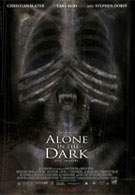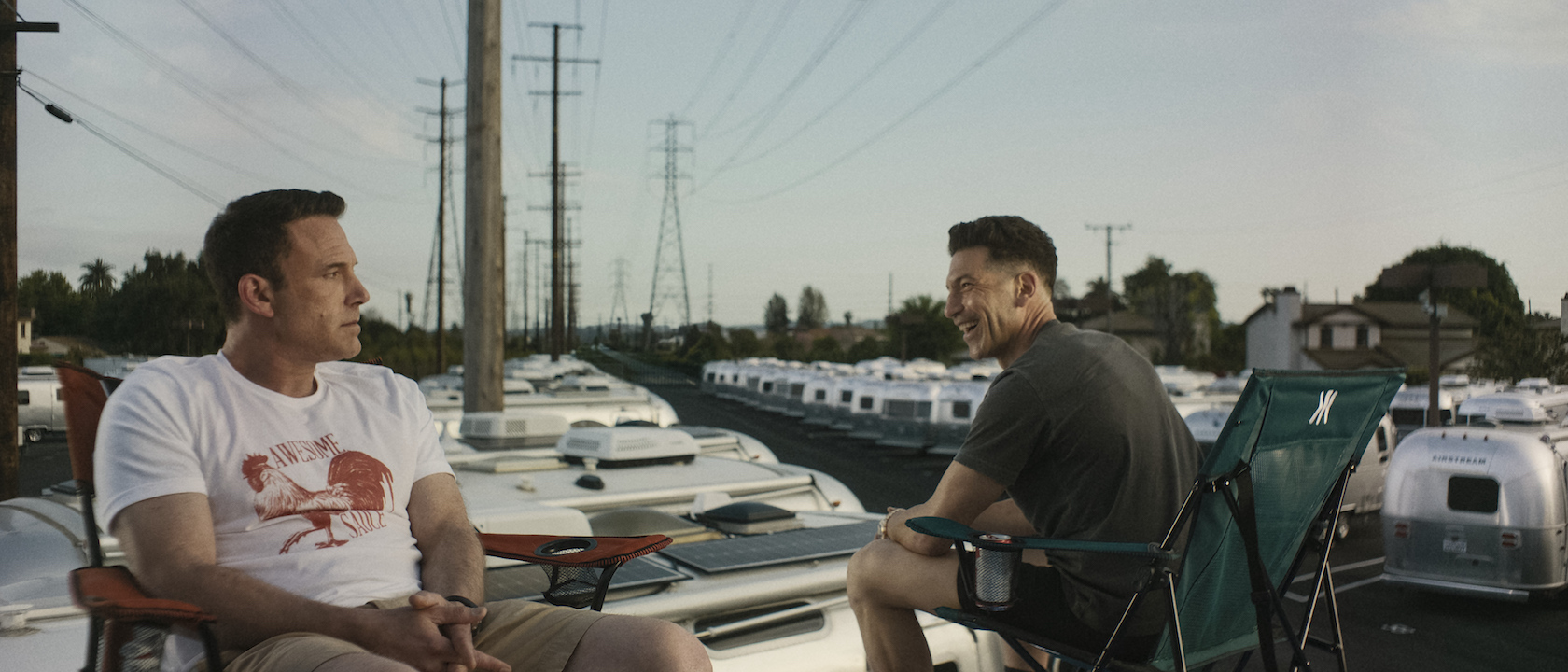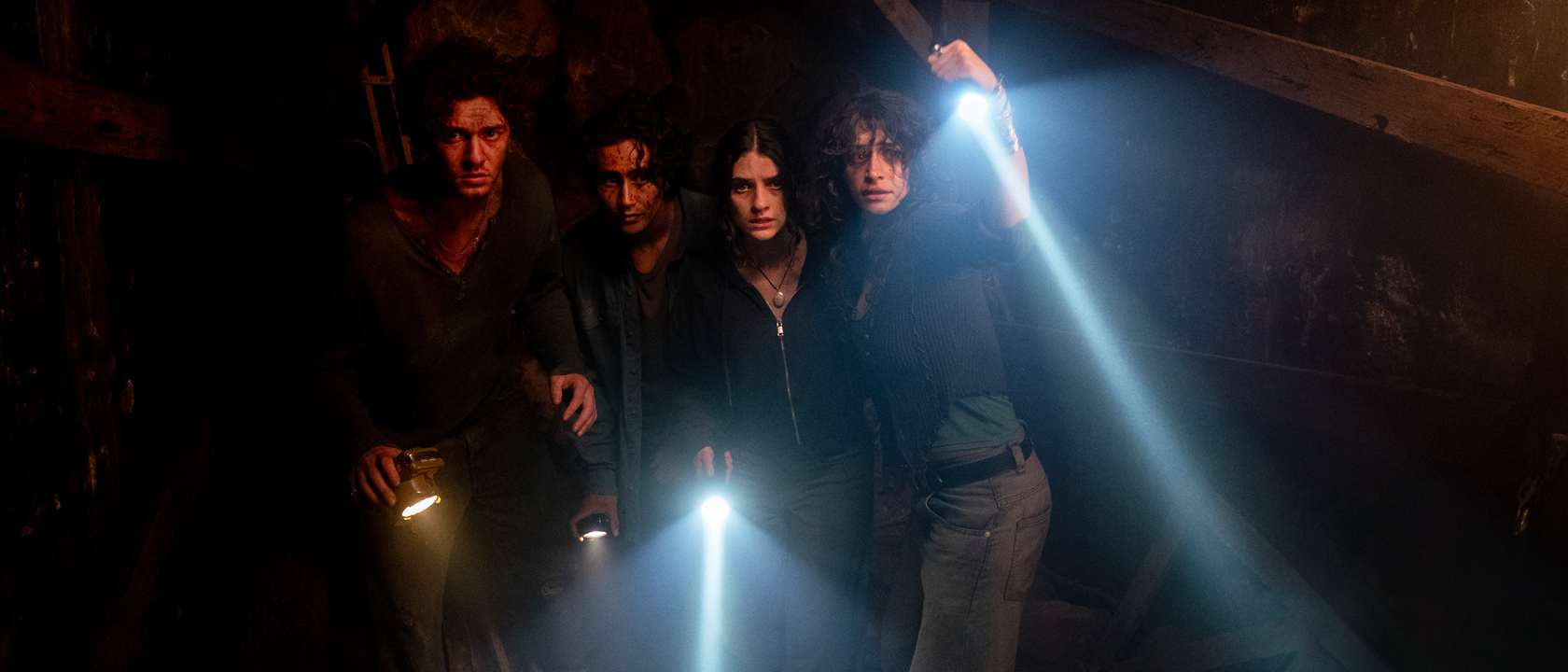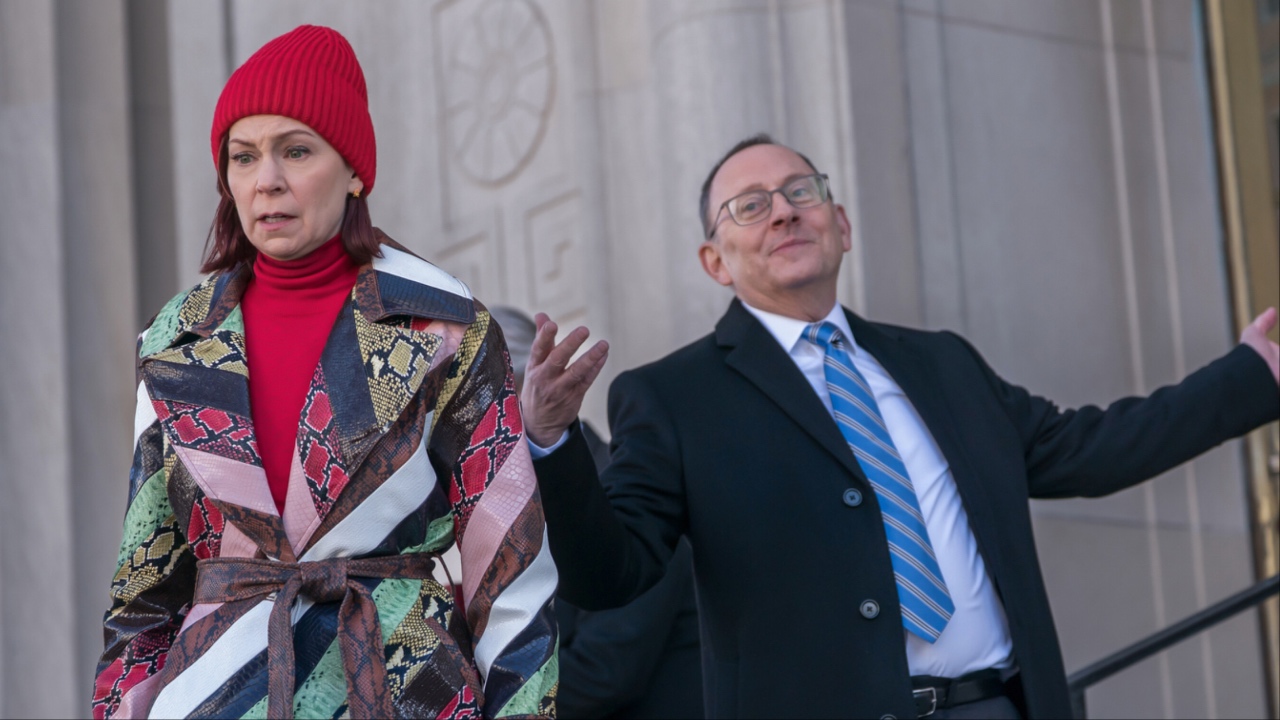I’ve said it before, and I’ll say it again: if a horror movie has to resort to an opening narration to set the stage for the film, that’s pretty much strike one. Think about it, the best movies out there give all of their background throughout the course of the story. You don’t need to know who Freddy Krueger is, or what the deal is with a remote base in Antarctica to be afraid at the beginning of Nightmare on Elm Street or The Thing. But an opening text crawl (with voiceover narration for those who don’t want to read) is the first mistake Alone in the Dark makes, the first of many.
Alone in the Dark follows Edward Carnby (Christian Slater), a paranormal investigator who doesn’t so much investigate the paranormal as have it come hunting him down. At the beginning of the film Carnby is returning from some excursion (where possibly he was “investigating” things off-screen) with an artifact from the Abskani. The Abskani we are told (thanks to the opening crawl) were an ancient, yet advanced, civilization who uncovered the door to a world of darkness that, after opening, caused the entire culture to disappear without a trace… except for artifacts that is. Carnby’s artifact draws attention from the outset, as he is pursued by a large man wearing sunglasses. Requisite trendy unexplained wire-fu combat follows and we get to see that Carnby can hold his own against the forces of darkness, although why or how is never really explained.
The mysterious artifact leads Carnby back to his former flame, Assistant Curator Aline Cedrac (Tara Reid), who seems to know a lot about the Abskani culture even though not one piece of scientific dialog is delivered with an ounce of believability. Apparently Aline’s boss Professor Hudgens (Matthew Walker) is a big fan of the Abskani, but not in a good way. He is attempting to uncover a way to open that door to the world of darkness, and will stop at nothing, including killing Carnby and Aline, to get the artifacts and achieve his goals. Luckily he doesn’t have to do much dirty work himself. He has an army of CGI dog-like creatures that are either invisible or can be seen (whichever is convenient to the script at the time) at his disposal, along with twenty “sleepers”, humans who are fused with a symbiotic creature that awakens when needed. Did I say twenty? I mean, nineteen. Early on in the film we learn that one of these “sleepers” escaped as a child and grew up to be a paranormal investigator who doesn’t so much investigate the paranormal… see where this is going?
Luckily Carnby and Aline have help on their side too. Before he was a paranormal investigator, Carnby was part of Division 713, a secret government agency that researches and deals with paranormal activity. This isn’t a Mulder/Scully operation though. This is a Starship Troopers secret organization, the type that crashes through windows at every opportunity and has more guns, helicopters, and tanks at their disposal than America currently has in Iraq. The division is now under Carnby’s successor, Commander Richards (Stephen Dorff). Richards is a guy who seems constantly angry, but you can tell when he’s really pissed off because that’s when he drops the f-bomb. The rest of the time he must be a teddy bear with an attitude. Richards is unhappy (enough to drop the f-bomb) when Carnby shows back up in 713’s business and warns him to stay out of the way. However, just when you think you understand what’s going on, those mysterious ghost dogs show up, everything goes dark, and we go to a heavy metal montage where everyone is lit by the flame off their machine guns. 713 appears out of nowhere to save Carnby and Aline, and suddenly they’re all working together to stop Professor Hudgens from getting to something on mysterious “Shadow Island”. Guess what – that transition is almost exactly what happens in the film, and makes about as much sense as what I’ve written above. It’s out of nowhere, and from that point on the film crashes and burns.
The best thing I can say about that crash and burn, is that the movie didn’t have far to fall, since it never establishes anything to rank a single part of the movie very high. Let’s face it, when your highlight is a washed up actor from the ‘80s you have a problem. Christian Slater may be talented, but he’s not a headliner anymore. Still, he’s the best thing about this movie. Alone in the Dark marks another failure in Stephen Dorff’s career, who still manages to be popular despite his only real success being Blade. Tara Reid, on the other hand, may be believable as the sexy love interest in My Boss’s Daughter, but no matter how you dress her up, she’s not ever going to be believable as a smart.
I try hard to be objective about movies, even when they are bad, but the truth is that there’s nothing to be objective about here. Most of the acting is on par with high school theatre. Characters are frequently costumed as if they’re ready in case a rap video spontaneously occurs (which could have happened had the soundtrack not favored excessive heavy metal music). Heck, even the sex scene comes up ridiculously short as the players never actually undress. You have a sexy woman known for her “wardrobe malfunctions” and we don’t even get to see her topless? Sorry, obvious dry humping to inappropriate music doesn’t cut it in a horror flick – at least give us some skin. That’s part of what the genre is popular for! It’s just one bad decision after another, and it all comes back to the man responsible for it all: producer/director Uwe Boll.
Alone in the Dark is based on the video game series of the same name, which in turn is based on the works of H.P. Lovecraft. There is nothing Lovecraftian about this movie though. It’s as if the writers took the character names and movie name from the video games, and left behind everything else. That’s a real shame. The games were creepy, with a feeling of mystery and suspense, responsible in part for successors like Resident Evil. As you moved the characters around you really started to fear for what would be behind each new door. In the movie you just hope they hurry through the next area so the film will come to an end. There’s no feeling of suspense or fear here. As is the norm these days, the film throws a couple of cheap “scare” moments at you, usually by the introduction of some loud sound which thankfully will keep the audience awake. Otherwise this film never captures a “horror” movie feel. At best it’s a science-fiction film, but I’ve seen better effects and storylines on television sci-fi anthologies like “The Outer Limits”.
It’s almost as if the movie sets out to defeat itself. Between the opening narration and the sequence we first see, the film cuts out all suspense about the storyline or the character of Carnby. We know he doesn’t remember anything about his life before he was ten, but thanks to the opening we know about that life, so his exploration for information about that time is unimportant. It also ruins one of the movie’s biggest “reveals”, which could have become a cool suspense moment straight out of The Thing if it had been played right. Instead it’s something we’re not interested in, and rightfully so, since the movie quickly tosses that moment aside in favor of more heavy metal music, and bad special effects.
Alone in the Dark may very well be the worst film I’ve ever seen in my life, and that’s not something I say lightly. Uwe Boll makes every mistake possible, from accepting a terrible script, to casting horrible actors in bad roles, down to the editing of the picture, which if done properly could have made this a suspenseful picture. Instead it’s a big screen release of a film that should make a lot of independent, shoestring budget directors sit and wonder, “Why can’t I get a shot?”











